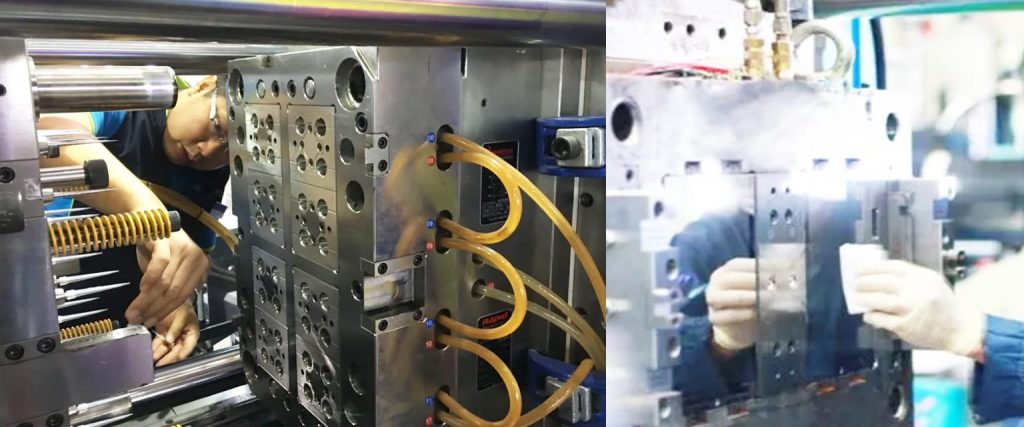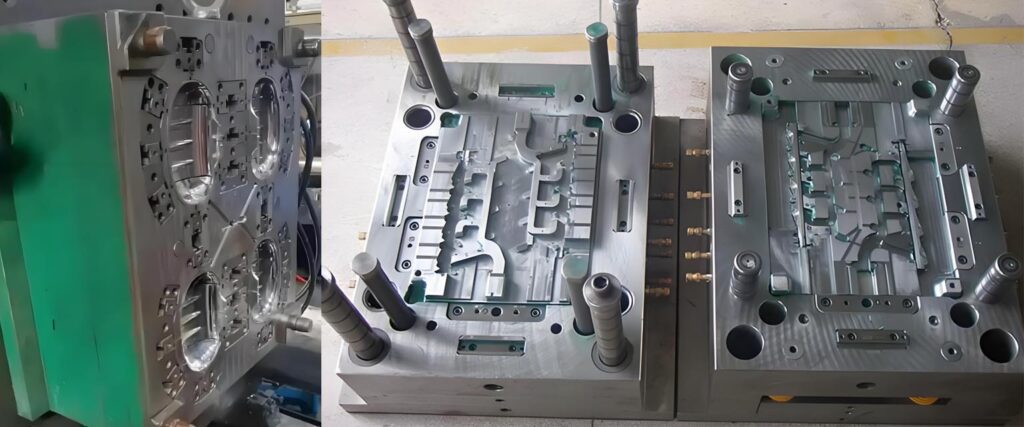Table of Contents
ToggleMold maintenance
During the continuous operation of the mold, it is easy to cause problems such as wear of parts, deterioration of lubricants, water leakage, and crushing of plastic materials during the movement process, so mold maintenance is required.
Mold maintenance is generally divided into daily maintenance and lower mold maintenance.No matter how well the mold is designed and manufactured, it is useless if the maintenance is not good. Common experience sharing in mold maintenance.
The daily maintenance of the mold generally includes the following aspects:
(1). Regular rust removal (appearance, PL surface, cavity, core, etc.)
(2). Regularly re-lubricating (ejector mechanism, row position, etc.)
(3). Regularly replace wear parts (tie rods, bolts, etc.)
(4). Other points to pay attention to
The maintenance of the lower mold of the mold needs to be professionally tested and protected by professional maintenance personnel after the mold is removed.
The cavity of the mold should be highly polished, and it should be polished regularly during the production process. Polish the cavity with polishing agent and tissue paper. A small amount of polishing agent penetrates into the surface of the cavity, and then polish the cavity with clean tissue paper until a mirror surface appears. When polishing, the tissue paper should be replaced frequently to avoid scratching the mold cavity. Skilled molding workers should repair the clamping edge of the mold when it is worn. The guide posts and guide sleeves of the mold should be lubricated regularly to ensure the alignment of the two halves and prolong the service life of the mold. , Whenever the production stops or the blow mold needs to be stored, the cooling channel of the mold should be blown out with compressed air, and the mold cavity should be coated with a protective agent to avoid corrosion.
Mold maintenance precautions
(1). When disassembling the mold, avoid bumps and water, and move smoothly.
(2). Spray hot mold, and then spray a small amount of mold release agent
(3). To conduct a comprehensive inspection of the mold and carry out anti-rust treatment: carefully wipe off the moisture and debris in the cavity, core, ejector mechanism and row position, etc., and spray mold anti-rust agent and apply butter.
The maintenance of the lower mold of the mold needs to be professionally tested and protected by professional maintenance personnel after the mold is removed, and the cavity and thimble of the mold are tested and protected.
Removing the mold requires professional personnel to complete the operation.
Moulds Protection
Because the mold has the characteristics of specificity, precision and vulnerability, the safety protection of the mold is very important. The general summary is as follows:
Anti-rust
Prevent the rust phenomenon caused by water leakage/condensation/rain/fingerprints in the injection molding machine mold.
Anti-collision
Prevent the mold from being damaged due to the broken thimble and not retracted in place.
Deburring
Prevent mold burrs caused by cloth wipe/material punch/hand wipe/nozzle pliers/knife touch.
Missing Parts
prevent the mold from being damaged during use due to the lack of parts such as tie rods/washers.
Anti-pressure
prevent the mold from being crushed due to the product still remaining and the mold being clamped.
Undervoltage
prevent the mold from being damaged due to excessive low pressure protection pressure.
Among them, the proportion of mold damage caused by broken thimble, thimble not retracted in place, residual product in the mold, and lack of accessories is relatively high, and because it occurs more frequently, more than 85% of mold damage is caused by this reason. The maintenance cost of the mold is generally high, so how to avoid such a situation is directly related to the interests of the injection molding industry.


